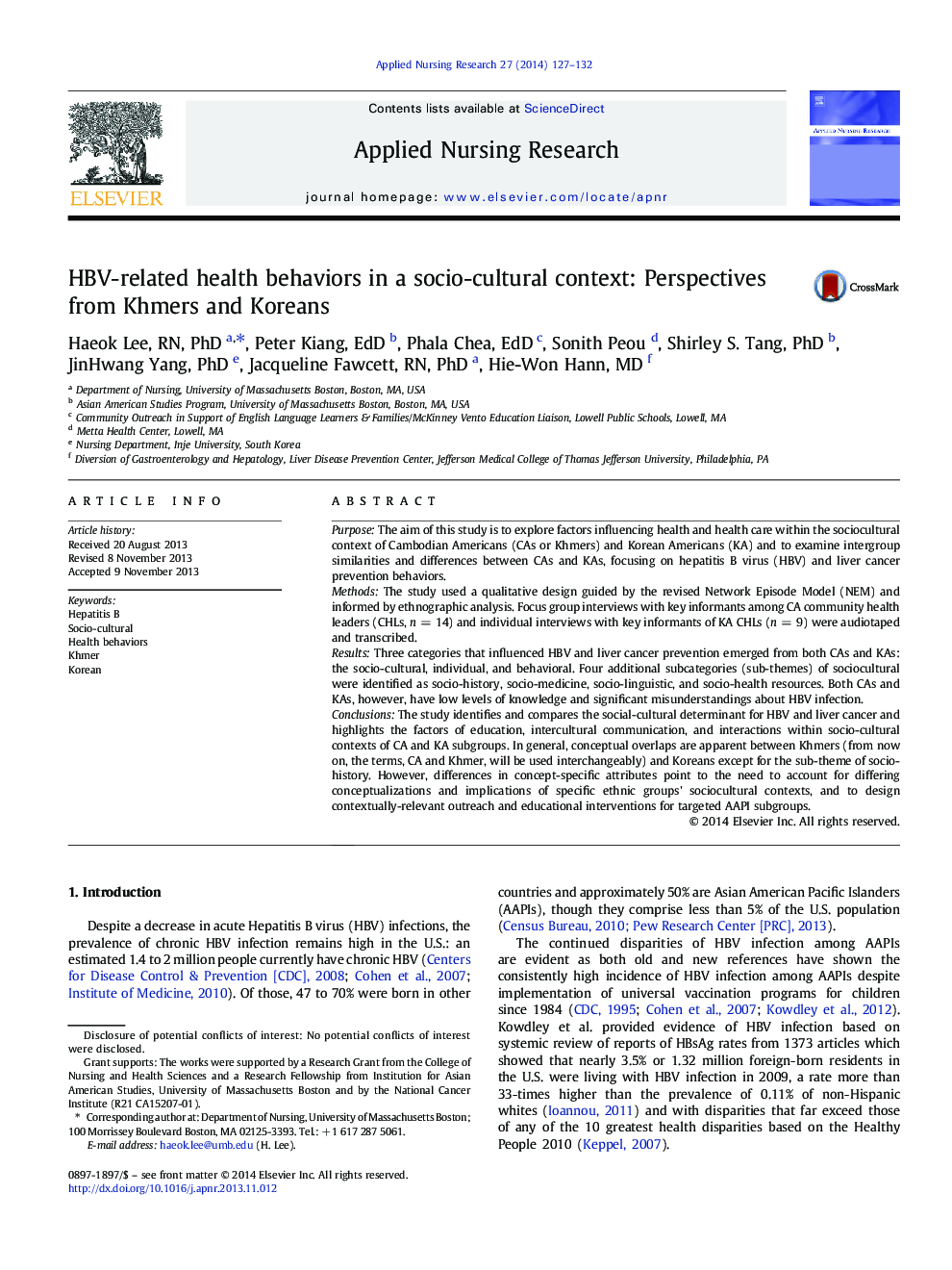| Article ID | Journal | Published Year | Pages | File Type |
|---|---|---|---|---|
| 2644854 | Applied Nursing Research | 2014 | 6 Pages |
PurposeThe aim of this study is to explore factors influencing health and health care within the sociocultural context of Cambodian Americans (CAs or Khmers) and Korean Americans (KA) and to examine intergroup similarities and differences between CAs and KAs, focusing on hepatitis B virus (HBV) and liver cancer prevention behaviors.MethodsThe study used a qualitative design guided by the revised Network Episode Model (NEM) and informed by ethnographic analysis. Focus group interviews with key informants among CA community health leaders (CHLs, n = 14) and individual interviews with key informants of KA CHLs (n = 9) were audiotaped and transcribed.ResultsThree categories that influenced HBV and liver cancer prevention emerged from both CAs and KAs: the socio-cultural, individual, and behavioral. Four additional subcategories (sub-themes) of sociocultural were identified as socio-history, socio-medicine, socio-linguistic, and socio-health resources. Both CAs and KAs, however, have low levels of knowledge and significant misunderstandings about HBV infection.ConclusionsThe study identifies and compares the social-cultural determinant for HBV and liver cancer and highlights the factors of education, intercultural communication, and interactions within socio-cultural contexts of CA and KA subgroups. In general, conceptual overlaps are apparent between Khmers (from now on, the terms, CA and Khmer, will be used interchangeably) and Koreans except for the sub-theme of socio-history. However, differences in concept-specific attributes point to the need to account for differing conceptualizations and implications of specific ethnic groups' sociocultural contexts, and to design contextually-relevant outreach and educational interventions for targeted AAPI subgroups.
